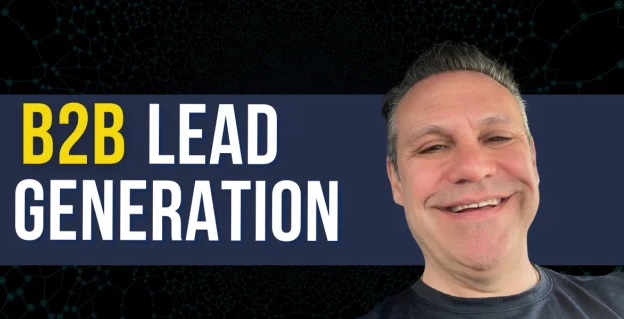The Ultimate Guide to B2B Email Marketing Statistics for 2023
Prepared June 29, 2024 by Jim Alamia
Email marketing statistics are vital for strategizing and measuring the effectiveness of your campaigns. Marketing requires building a plan and outlining your goals, strategies, tactics, and measurements. Parts of your analysis and forecast require benchmark marketing statistics to make your plan and execution official, practical, and meaningful. Data is everything, and you need something to compare against, mainly when calculating ROI and growth in your market segment.
What is B2B Email Marketing Statistics?
This list includes documents referencing the most significant B2B email marketing statistics 2023, covering various aspects of digital marketing within email. These insights will help you stay ahead in the ever-evolving landscape and make better decisions aligned with getting better results and growing profits.

What Type of B2B Email Marketing Statistics are Being Covered?
We are covering a good amount of B2B Email Stats. We’ve done the research, and the 13 statistics included below are the major buttons in B2B Email Marketing. I hope you like the article. Please use it as a backlink when you need to lay statistics on your articles or set benchmarks for your marketing forecasting or goal setting.
1. Email Marketing Engagement Statistics
77% of B2B marketers have reported increased email engagement over the past year. This trend underscores the importance of email marketing in engaging your audience and driving conversions (Smart Insights) (HubSpot Blog) .
Megaleads Opinion: This makes sense; as distribution options become less effective, B2B marketers continue to use email as a promising tool for conversion. Email marketers can deliver highly targeted business email leads to prospects. Marketers create ideal customer profiles (ICPs), do market sizing and research, and deliver the right email message to the targeted audience. The prospects can reply to the email, call your phone number, or use your calendar link. B2B email marketing engagement is on the rise, especially with the discontinuance of user cookies and more regulation on call center engagement.
2. Mobile Email Opens Statistics
Over half (55%) of all B2B emails are opened on mobile devices. This statistic highlights the necessity of mobile-optimized email designs to ensure accessibility and engagement (Smart Insights) (HubSpot Blog) .
Megaleads Opinion: This makes reasonable sense; many business professionals are on the go. We use our cell phones all the time. We take phone calls to them, send text messages, and check email. Gen Xers like myself use our phones and are very tech-savvy. The phone is an excellent tool, but sitting down and crafting a professional email is typically done on our laptops or desktops. Baby Boomers check their phones the same way, but work is done on the desktop. Younger generations use their phones like Gen X and Baby Boomers use desktops. I guess we’re all creatures of habit. I trust you’ll see this number go even higher in the future. Ensure you optimize email for mobile and make your CTA’s simple and effective.
3. Email Marketing ROI Statistics
Testing your emails can yield a 28% higher return on investment (ROI). This shows the value of A/B testing and optimizing email content for better performance (HubSpot Blog).
Megaleads Opinion: I can see how testing can achieve these increases in email marketing ROI statistics. A/B testing is not as complex as you think. You have two versions with minor changes between them; it may be a subject line or the email copy itself. Yes, you are trying to beat the performance of your best email. Remember to stay consistent with the email-sending system and lead lists, and focus on the variations of email copy. Your emails need to look like they came from a business executive Outlook account with legitimate footers, trackable phone numbers, and the use of calendar links.
Keep your emails short and right to the point, and focus on your strategy and the variations of emails you send, like cold emails used for lead generation or demand generation. You are nurturing your business leads lists and pipeline accounts depending upon their stage with a transparent system of creating MQL – Marketing Qualified Leads, turning them into Sales Qualified Leads, and feeding them into your CRM with complete visibility with real-time dashboards. You may also have newsletter-type emails with graphics and feature company information and events. It’s all about strategy and delivering the correct copy to the right prospect (leads vs. pipeline) accounts.
4. Global Email Users Statistics
There are 4 billion daily email users, expected to reach 4.6 billion by 2025. This massive user base makes email a crucial channel for reaching a broad audience.
Megaleads Opinion: According to Worldometer, 8.1 million people (as of June 2024) are in the world right now, so this number makes sense beyond a reasonable doubt. It shows that email is an adopted tool worldwide, a very effective marketing distribution source when used correctly. B2B email marketing works better for targeted leads and prospects and targeted marketing, as opposed to a “spray and prey” broad approach.
5. Email Marketing Revenue Statistics
Email marketing revenue is projected to reach nearly $11 billion by the end of 2023. This growth demonstrates the effectiveness and profitability of email marketing strategies.
Megaleads Opinion: I believe it. I’ve worked on hundreds of B2B email campaigns and tried many other tactics to drive revenue, and nothing works better than email and a quality outbound call center. It would help if you got them to work together because email is the warm-up, and the call center, BRDs, and salespeople are the ones who close the leads. So it would be best to have both of these working together: Email and call Center.
6. Preferred Communication Channel Statistics
46% of B2B professionals prefer receiving brand communications via email, making it the preferred method for mobile users.
Megaleads Opinion: I agree with this. I get B2B emails all day in my inbox. I pay attention to these messages, and I can read many of them. This stat makes sense, for sure. See my #2 response.
7. Small Business Email Usage Statistics
64% of small businesses use email marketing to reach their customers. This statistic indicates that email marketing is a favored tool for small businesses aiming to connect with their audience.
Megaleads Opinion: I agree with this as well. Small businesses rely on email. This is where vital information goes. Email runs small companies. You give close contacts that you trust your cell phone number and deal with some text messages. SMBs are engaged with email to keep the machine running.
8. Email Automation Benefits
Automation in email marketing is used primarily for sending triggered emails, drip campaigns, and segmentation, enhancing efficiency and personalization in marketing efforts.
Megaleads Opinion: This can work well if you know how to plan for marketing automation and keep your staff focused. One of the most significant issues I’ve seen with standing-up marketing automation is the over-thinkers and the people who bring you down because they get caught up in scope creep and paralysis by analysis. It would be best to keep it simple, segment your CRM database and lead sources, develop simple automated emails depending on where they are in your user journey, and apply personalization. Think about it from lead to discovery call to pipeline to close. Don’t think email will do it all; you need to get your staff on the phone to communicate with your leads and prospects and build rapport. How do you communicate with your prospects in your sales stage lifecycle? Please keep it simple and show that you have the expertise, experience, and trustworthiness.
9. Email Frequency Statistics
22% of B2B marketers send 2-3 emails per day, while 21% send daily emails. Determining the optimal email frequency is crucial for maintaining engagement without overwhelming subscribers (HubSpot Blog) .
Megaleads Opinion: I think this one depends on the type of campaign and the sales stage of the leads and prospects in your sales stages. This seems reasonable, and I can accept this stat. You don’t want to overwhelm your subscribers; when building your proprietary opt-in list, I think 1-2 emails a month are reasonable, probably more like 1. But again, it depends on your business space; I’ve seen businesses in the apparel space and other e-commerce businesses send multiple emails each month or even daily.
10. Email Open Rates Statistics
The average email open rate is 46-50%, while the clickthrough rate averages 2.6-3%. These metrics are essential for gauging the effectiveness of your email campaigns.
Megaleads Opinion: The average open rate seems a bit high, but the click-through rate is aligned with current B2B email campaigns. With the advent of Generative AI cold email, you will see higher click-through and reply rates. The AI essentially is testing as it learns the best copy and tactics to perform to get the conversion. You may see reply rates as high as 10% shortly; then, you’ll know a shake-out. Remember, the higher you go up the C-Suite executive ladder, the brighter your prospects get. Generative AI will create emails on the fly as it researches the recipient and the news to develop resonating email copy built for replies and conversion.
11. Best Time to Send Emails
The best times to send marketing emails are between 9:00 AM – 12 PM EST and 12:01 PM – 3 PM EST, while the worst time is 1 AM – 3 AM EST .
Megaleads Opinion: This makes sense; we like to send B2B emails during business hours. If we are working on national email lists, we’ll send them out around Noon EST to get to the West and East Coast. The big idea is to deliver the email during business hours so the prospects see it coming in. I don’t like Mondays for email; I typically stick to Tuesdays and Wednesdays.
12. Importance of Subscriber Segmentation
78% of B2B marketers cite subscriber segmentation as the most effective strategy for email marketing campaigns, followed by message personalization (72%) and email automation (71%) (HubSpot Blog) .
Megaleads Opinion: Segmentation is huge. It all comes down to delivering the right message to the right audience. By segmenting your database and then conducting analysis around your various prospect groups, along with their personas, pain points, and the solutions they seek, you will do a better job of nurturing your audience and creating hand-raisers using marketing automation. Personalization plays a vital role in email outreach. If someone spent the time researching me or my company, I would most likely read that email. The complex part of this puzzle is putting it together: STRATEGY SEGMENTATION + EMAIL MARKETING + PERSONALIZATION + MARKETING AUTOMATION.
13. Mobile-Friendly Email Statistics
Launching a mobile-responsive email design can increase unique mobile clicks by 15%, emphasizing the importance of mobile-friendly email formats (HubSpot Blog).
Megaleads Opinion: We believe in email designs within the correct emails. Making it easy for prospects to engage with your email message is critical. I can see this statistic increasing over time as well.
B2B Email Marketing Statistics: Let’s Wrap it Up, My Little Data Wizards!
These statistics provide a comprehensive overview of the current state of B2B email marketing. By leveraging these insights, marketers can refine their strategies, enhance engagement, and drive better results. Looking ahead, we expect the market to continue evolving with advancements in automation, AI, and data privacy regulations. Marketers should stay informed and continuously adapt their strategies to remain competitive in this dynamic landscape.
Stay informed and continuously adapt your marketing strategies to stay competitive in the dynamic digital landscape.
Click here to have a Discovery Call with Jim Alamia
